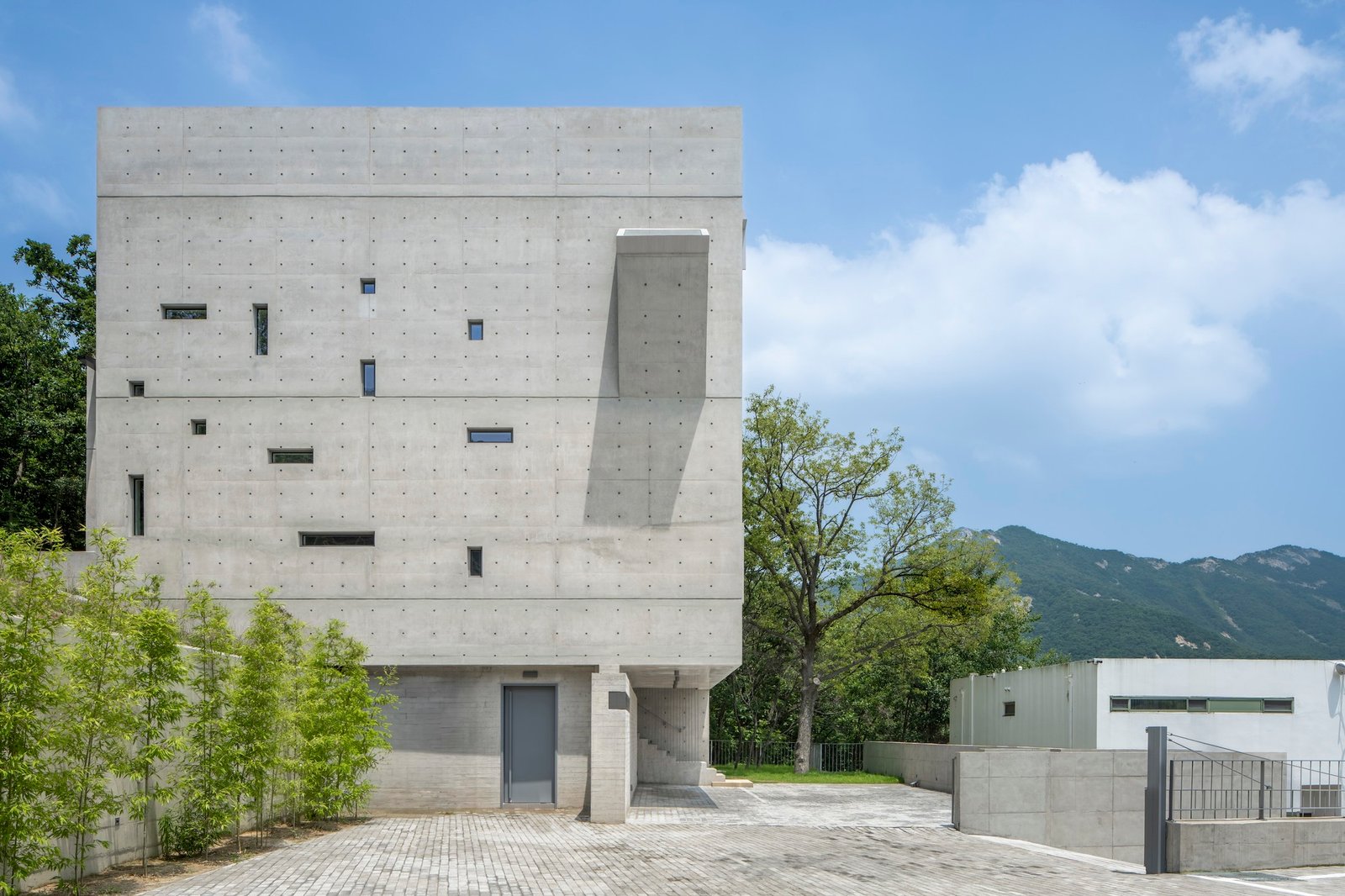






Existential pilgrimage space – Rather than traditional places of worship within an urban community, meditation chapels are sanctuaries for solitary individuals to savor their presence in the presence of nature’s divine, essentially a retreat from the city. is. It all began with a request for a small place of prayer for the pilgrims. Rather than imitate the stripped-down form of minimalist architecture, the architects chose a functional simplicity that stays true to its role as a vessel for the visitor’s presence.



1 lift volume – The volume of the simple chapel, nestled in the midst of vast nature, is a raised box-like structure that signifies isolation from the secular world. The minimalistic sequence and vertical expansion effect create a pious space. Rather than adopting a strolling architectural approach that extends the path for visitors to enjoy the richness of nature and space, visitors quickly and concisely reach the firmament and stand directly before God as a solitary individual. make it possible.


4 surfaces – The interior of the chapel is divided into four sides, each with its own purpose and theme: the sea, sound, light, and the surrounding backdrop. The front is covered with a concrete wall, blocking out the hazy West Sea and natural light, allowing you to enjoy the heartwarming view. Instead of the usual dramatic sea with rolling waves, the dark western sea exudes a more solemn atmosphere. In this way, even a modest pulpit for the purpose of religious persuasion becomes unnecessary.


At the back is a wall with an organ, a tool that synesthetically expresses heavenly harmony. This is a classic example of a wall that is simple but not shabby, vibrant but not luxurious. The green walls are composed of monochrome colors, creating a well-balanced design. The 12 funnel-shaped stained glass windows serve as a metaphor for nature. Unlike the colored glass of medieval churches, which sought to concretely represent the content of the Bible, here the interior and exterior are filled with an abstract motif of greenery, giving visitors a continuous sense of nature. A wall at the entrance to the chapel leads the view from inside to the outside world. From the observer’s point of view, the other he sees three theme walls and it is an empty wall. In the evening, when the sun sets, the stained glass becomes a screen that catches the long rays of light.



3 spaces – The chapel consists of three spaces that bring out the functions of mindfulness. First, there’s the Sea Chapel, where you can gaze at the endlessly dim scenery, like James Turrell’s installation art, and the Closet Chapel, where you can quietly concentrate on the light source. Furthermore, a “Sky Chapel” has been installed on the rooftop, surrounded by greenery and from which only the sky can be seen. Therefore, the spatial experience of the Mindfulness Chapel emerges from simple volumes and is diverse and sustainable. The Sea Chapel is a place where several people can admire the faint horizon and neutral sky of the distant West Sea. A collaborative mindfulness space that supports rich artistic experiences.



The closet chapel is long and narrow, and the natural light that comes in from the front wall reaches all the way to the floor along the wall, adding to its piety. This is a light mindfulness space where you can think deeply by yourself, and is located as an independent space above the front of Sea Chapel. The Sky Chapel is a rectangular rooftop space that achieves total awe, surrounded by a ridge that is faintly visible beyond the building and a concrete wall that nicely hides the buildings below. Vertically, you can focus on emptiness mindfulness. Horizontally, it evokes endless mindfulness.


